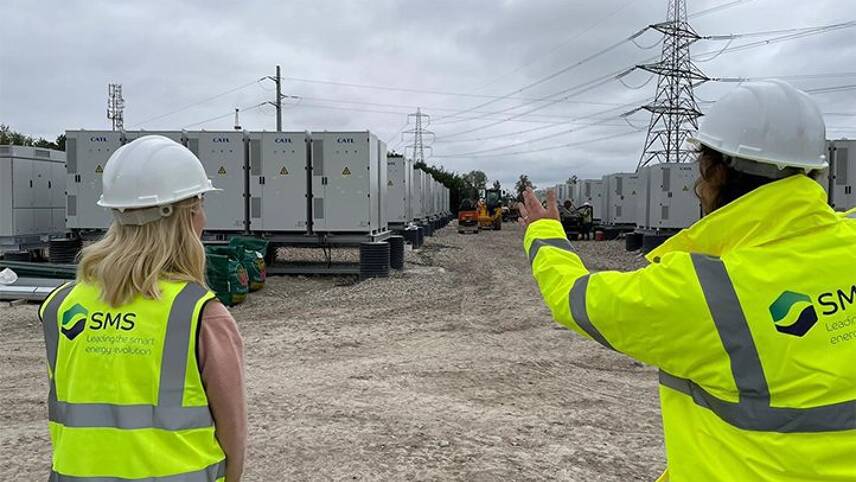Register for free and continue reading
Join our growing army of changemakers and get unlimited access to our premium content

SMS has three other energy storage projects under construction in the UK
SMS announced on Monday (31 January) that its 50MW system is now live in Burwell, Cambridgeshire. The company claims the system can store the equivalent amount of energy required to serve thousands of homes in the UK.
SMS, which owns, manages and operates the system, will start balancing and ancillary services shortly.
“Our batteries will play a significant role in improving the integration of renewables and help bolster system resilience as we come to rely on clean energy generation,” SMS’s managing director of grid-scale energy storage John Flaherty said.
“Such benefits are central to reaching net-zero emissions, and our aim as a business is to deploy the low-carbon assets required at scale to achieve that goal as soon as possible.”
SMS also plans to bring a 40MW storage project in Barnsley, Yorkshire, online later this year, with work also underway on two more 50MW projects in Suffolk and Derbyshire respectively.
Net-zero role
According to National Grid, up to 13GW of new energy storage needs to be built by 2030 to assist with the net-zero target for 2050.
This time last year, it was revealed that the UK has more than 16GW of battery storage capacity planned across more than 700 projects. Indeed, BEIS moved in summer 2020 to ease planning restrictions for utility-scale batteries, permitting cells over 50MW in England and arrays over 350MW in Wales.
Additionally, the National Grid ESO has claimed that the emergence and integration of new technologies mean that a zero-carbon electricity grid by 2025 would be feasible.
However, if the UK is to align its energy sector with its net-zero target, domestic capacity for energy storage and other assets that enable flexibility will need to grow to 49.5GW this decade. That is according to a new analysis from Wärtsilä.
The analysis explores how the UK can deliver on National Grid’s ambitions regarding carbon-neutral or even carbon-negative electricity, while also aligning the rest of the energy system with its legally binding national net-zero target. It states that flexible energy assets will help to reduce the cost of the transition while alleviative concerns about the intermittency of renewable energy generation.
Wärtsilä models what it claims is an ideal scenario, in which the UK can transition to 100% renewable and lower-carbon energy. This scenario involves the UK hosting 7.3GW of energy storage capacity – predominantly in the form of utility-scale batteries – as well as 42.2GW of flexible gas power capacity.
With the current cost of living crisis continuing to make headlines, energy storage could act as a viable measure to reduce household energy bills.
The annual cost of the UK’s net-zero transition could be billions of pounds cheaper if policymakers and the public and private sectors collaborate to scale up battery storage, hydrogen and other flexible energy innovations.
A report from the Carbon Trust found that “embedding” flexibility across power, heat and transport will be necessary to reduce the cost of the low-carbon transition – and will reduce operational costs as well as upfront costs. If properly embedded and scaled, flexible technologies including batteries and low-carbon peaking plants could cut up to £16.7bn off of annual bills by 2050.
Matt Mace


Just a word about units.
The watt is a rate of power generation or usage, one joule per second.
It is only meaningful when the time factor is included. May I suggest that the Burwell system should be refereed to as a 50MWhour system.
Please correct me if I am mistaken .
Richard Phillips